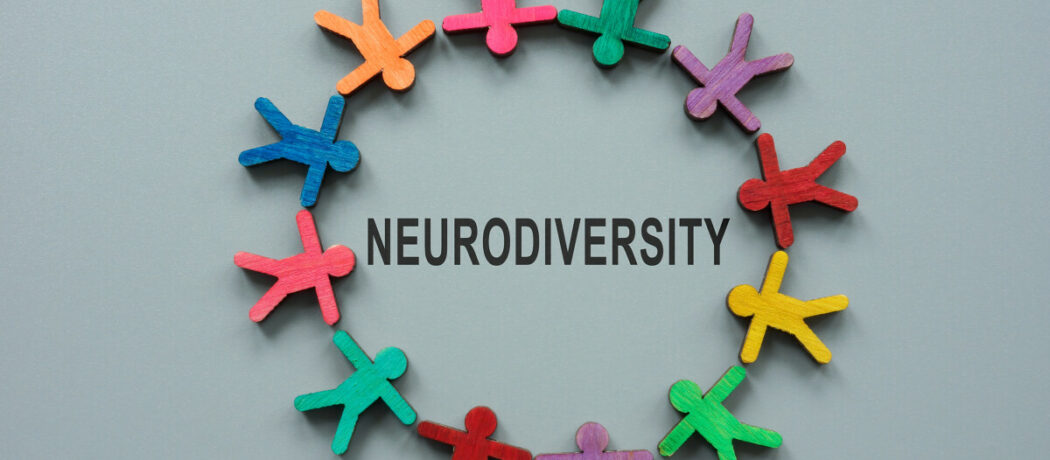How companies can hire and support neurodiverse employees

Share
Approximately, 15-20% of the world’s population is on the neurodiversity spectrum, which includes a variety of cognitive diagnosis such as dyslexia, autism, ADHD, down syndrome and dyspraxia. Research shows that neurodiverse employees have exceptional skills in pattern recognition, memory, as well as mathematics, which can all be highly beneficial for companies.
In general, companies that hire neurodiverse employees (e.g., SAP, Microsoft, JP Morgan, Ernst & Young, Deloitte, Hewlett Packard) have seen several advantages such as increased productivity, greater creativity, enhanced culture and reputation, and reduced turnover. In fact, some estimates suggest that autistic employees can be up to 140% more productive than their neurotypical counterparts.
Despite this recognition, a vast majority of neurodiverse individuals remain unemployed. Some studies suggest that unemployment in neurodivergent individuals could be as high as 80%. This should not sound surprising since about only one out of ten firms focus on neurodiversity inclusion.
What are some steps that companies can take towards neurodiversity inclusion? Based on existing studies as well as our own research with companies, we can identify three key areas that need to be addressed for hiring and managing neurodiverse employees.
Job interviews need to be adapted
First, companies have to customize the hiring process to suit the needs of neurodiverse individuals. To begin, the language of the job advertisements should be inclusive to avoid any misinterpretations.
For instance, BNP Paribas decided to have a clear and concise language in their job advertisements. Organizations could also emphasize their commitment to diversity and inclusion.
Next, instead of interviews, companies can consider having skill-based assessments. Sending a CV followed by an initial screening interview may not necessarily work well for those with autism as they may find such communication particularly challenging. Instead, through skill-based assessments, hiring managers could understand whether the candidates are capable of performing a job.
Along this direction, at SAP, neurodiverse candidates are asked to perform a set of tasks where they can demonstrate their abilities. Similarly, Microsoft organizes a hiring event where candidates learn about the work environment and work on skill development while preparing for interviews.
Finally, companies need to partner with organizations that work with neurodivergent individuals as they may lack in-house expertise for hiring. In the US, for example, there are a number of intermediary organizations that can help organizations in hiring and supporting neurodiverse employees. They may be a great help in identifying and screening candidates as well as in onboarding and training them.
“Office Buddy”
It is clear that hiring neurodiverse candidates is not enough, it is also important that they feel supported and find opportunities to develop their competencies. In this regard, organizations can ensure that their neurodiverse employees have mentors for supporting both work-related and social needs.
For instance, SAP ensures that there is support circle for both workplace and personal life in place for both work as well as for social aspects related to the job. Similarly, Ernst & Young provides a job coach and an office buddy to the neurodivergent employees and has also appointed neurodiversity champions and executive sponsors.
Next, companies need to think about career development opportunities and personalized paths for neurodiverse employees. These would include thinking about issues such as how performance will be evaluated and how they can develop skills for progressing in their careers.
Finally, to provide a supportive environment, it is essential to educate people who work with neurodiverse employees. Most often, it is not neurodiversity, per se, that holds people back but it is the bias and discrimination that they face at the work. Neurotypical employees should therefore undergo training to address their conscious and unconscious biases.
They should also develop a sensitivity towards mannerisms and ways of working of neurodiverse colleagues. As a step towards creating a supportive environment, Ernst & Young trains its teams with neurodiverse employees to communicate clearly and unambiguously. Similarly, Deloitte has created neurodiversity learning guides that helps managers in understanding how they can hire and support neurodiverse employees.
Limiting the frequency/duration of meetings
Finally, companies should think about how the workspace and processes could be designed and adapted to suit the needs of neurodiverse employees. Some such adaptations include having calmer colors on walls and quiet spaces in the office for taking a break.
To facilitate meetings, the agenda and the reading material could be sent in advance. Also, the frequency and duration of meetings could be limited, and breaks could be scheduled in case of long meetings. Work schedules could also include no-meeting days. Flexible and remote work options also facilitate managing work and self-care routines of neurodivergent employees and can eventually help them build their careers.
Not only that large companies can take steps towards neurodiversity inclusion, but also smaller companies could follow the same path. In our own research, we studied how a restaurant, which essentially is a small business, successfully employed neurodivergent employees. Like the large companies, they partnered with associations for the identification of candidates. The hiring process involved substituting a formal interview with an unstructured initial meeting.
In addition, neurodiverse candidates worked on tasks that one normally performs in a restaurant. This helped in understanding whether candidates were suited for the job. At the same time, it also provided the candidates with an opportunity to gauge if they find the job and the work environment suitable. One thing that stood out was that families of neurodivergent candidates were also involved in the initial hiring stage and restaurant owners made sure that they were convinced that the candidates were in a suitable place. Finally, continuous training of neurodiverse employees as well as neurotypical coworkers was the key for creating a conducive work environment.
Through these steps, the restaurant could hire and support neurodivergent employees, and in the process, got the benefits of a committed staff with a low turnover rate, something which is a constant struggle in the food and beverage industry.
There is no doubt that companies can benefit from employing neurodivergent employees. However, to reap these benefits, it is essential to rethink and adapt the existing systems and processes.
Mamta Bhatt, Associate Professor of Organizational Behavior, IESEG School of Management, LEM, CNRS (UMR 9221) and Antonio Giangreco, Full Professor in HRM & OB, IESEG School of Management, LEM, CNRS (UMR 9221).
This is a translated version of the article originally published on the Conversation France.
The original article in French can be viewed here.




